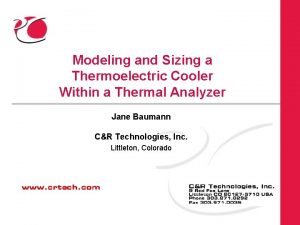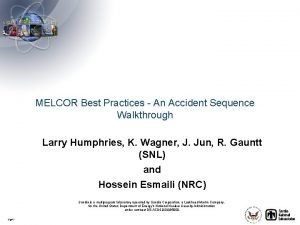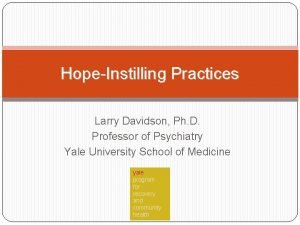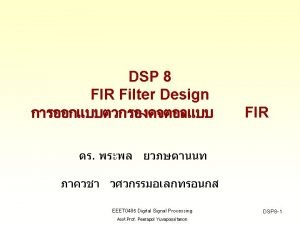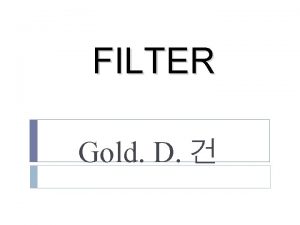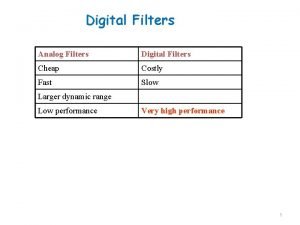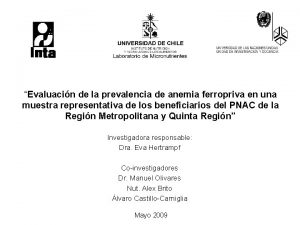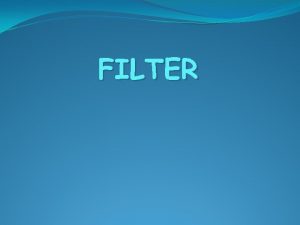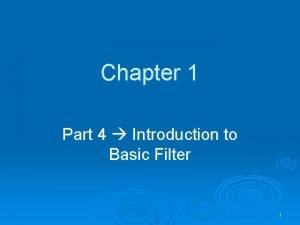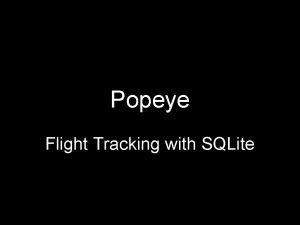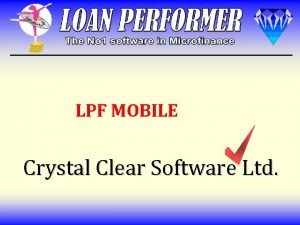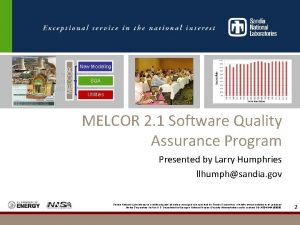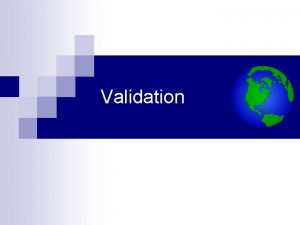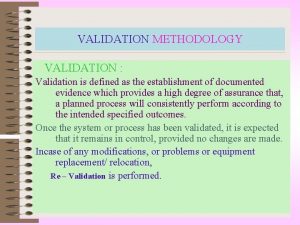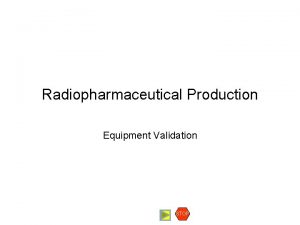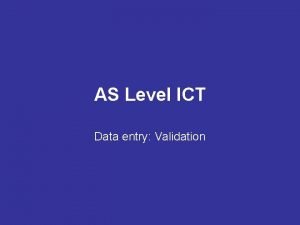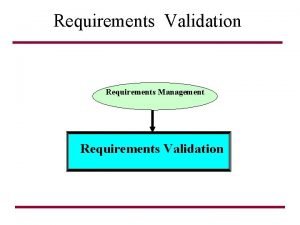MELCOR Code Validation for LPF Applications David L

![What is Leak Path Factor? 2 [DOE-HDBK-1224 -2018] What is Leak Path Factor? 2 [DOE-HDBK-1224 -2018]](https://slidetodoc.com/presentation_image_h2/0fd48563bc0ca89e65fd6f7785cbf1ce/image-2.jpg)













- Slides: 15

MELCOR Code Validation for LPF Applications David L. Y. Louie, Ph. D. Email: dllouie@sandia. gov Sandia National Laboratories EFCOG Nuclear Facility Workshop 2021 NSR&D Subgroup Session February 22, 2021 1 SAND 2021 -1838 C Sandia National Laboratories is a multimission laboratory managed and operated by National Technology & Engineering Solutions of Sandia, LLC, a wholly owned subsidiary of Honeywell International Inc. , for the U. S. Department of Energy’s National Nuclear Security Administration under contract DENA 0003525.
![What is Leak Path Factor 2 DOEHDBK1224 2018 What is Leak Path Factor? 2 [DOE-HDBK-1224 -2018]](https://slidetodoc.com/presentation_image_h2/0fd48563bc0ca89e65fd6f7785cbf1ce/image-2.jpg)
What is Leak Path Factor? 2 [DOE-HDBK-1224 -2018]

3 MELCOR Code § MELCOR is developed by Sandia National Laboratories § US Nuclear Regulatory Commission (NRC) § Developed initially for severe accident analysis of Light Water Reactors § Since early 1980 s § MELCOR Development § US NRC Cooperative Severe Accident Research Program (CSARP) § Over 900+ licensed MELCOR users worldwide § Light water reactor (LWR) research § Advanced reactor development § Nuclear fusion development § MELCOR Application § NRC licensing support § Existing LWRs § Advanced reactors § Non-reactor support § Nuclear fusion research § Spent fuel reprocessing accident analysis § DOE facility support § MELCOR is designated as a Toolbox code for LPF analysis

4 History of MELCOR uses in SBs §MELCOR is a DOE Toolbox code §MELCOR 1. 8. 5 LPF guidance and gap analysis reports (2004) §MELCOR 1. 8. 5 and 1. 8. 6 have been used for LPF analyses (2000+) § To support the facility DSA at: § LANL – PF 4(TA-55), WCRRF, DVRSF, CMRR, BTF § LLNL – Plutonium facility (331) § NNSS– Device Assembly Facility, Area G Tunnel § Pantex § SRNL – K Area Spent Fuel Storage Facility §MELCOR 2. 0 or later version (today) §LANL PF 4

5 MELCOR V&V DOE NSR&D Program §NSRD-10 project was done to supplement the 2004 MELCOR 1. 8. 5 guidance report § Use latest MELCOR version (2. 1) § Validation tests § Reactor and non-reactor experiments, particularly for aerosol physics § Analytical tests § Verification tests § Version-to-version comparison – MELCOR 1. 8. 5, 1. 8. 6 and 2. 1 § Additional verification beyond those in MELCOR 1. 8. 5 guidance report § Best practices for common accident scenarios at DOE facilities

6 NSRD-10 V&V Test § In addition to those identified from MELCOR Assessment Report § Fire test –LLNL Enclosure Fire – from Validation document of CFAST § Aerosol resuspension test – STORM SR-11 Test § Additional experiments from DOE-HDBK 3010 -94 § Wind Tunnel Gasoline pool fire tests conducted at the RART facility § Spills and Pressurized Release Tests conducted in RART § Verification § Sample problems in MELCOR 1. 8. 5 guidance report § Version-to-version comparison: MELCOR 1. 8. 5, 1. 8. 6 and 2. 1

Multi-Room Fire Validation Study 7 § Funded by LANL SB group § Assess MELCOR thermal-hydraulic response in multi-room fire § Assess smoke/contaminant aerosol transport § Light smoke particle (hydrocarbon) § Heavy contaminant particle (i. e. , Pu. O 2) § Use NIST NBS-GCR-502 FM 21 Test to validate MELCOR § § Part of CFAST validation suite Thermal hydraulic validation CCF model: Aerosol transport of smoke/contaminants Heat Release Rate from Propylene Combustion

8 FM 21 Test – MELCOR Model Control Volume setup to support: - Counter-current flow through door - Circulatory flow within room Control Volume setup to support stratified aerosol transport [Tan 1992]

THERMAL-HYDRAULIC RESULTS (FM 21 STUDY) 9 Hot Gas Layer Temperature Comparison • Experimental and predicted trends (Case 0) agree • Door counter-current flow not measured in experiment • Predicted counter-current flow agrees with expected flow behavior Oxygen Counter Current Flow composition in Burn Room ∆P between BR and Adjacent Corridor

SMOKE & CONTAMINANT INPUTS (FM 21 STUDY) 10 We did small sets of sensitivity studies on smoke only, UO 2 and combination *Assumed. Smoke is typically irregular shaped+ and ranges between 1 to 2 g/cc. Production rate of 0. 095 smoke mass per mass of fuel (g/gfuel) [Butler 2004] Irregular shaped soot particles [Xu 2017] Assumed UO 2 release rate options Cont. Puff

11 SMOKE TRANSPORT RESULTS (FM 21 STUDY) General trend agreement (with exceptions) between experimental opacity and MELCOR smoke concentration (Case 4)

12 AEROSOL RESULTS (FM 21 STUDY) TR 2 TR 1

SUMMARY AND CONCLUSIONS (FM 21 STUDY) § Thermal hydraulic response § MELCOR can model fire scenario, even through it does not contain a dynamic hot gas layer by using stratified control volumes § Combustible burn can be modeled to allow better treatment of oxygen condition § Counter-current flow model enables fire-room door counter-current flow § Smoke transport response § MELCOR agrees well with FM 21 smoke data § Irregularly shaped particulate can be modeled by adjusting density and shape factor § Modeling insights associated with smoke, UO 2 deposition and environmental release § Higher density increases deposition § Particulate size is a major contributor to gravitational settling § MELCOR single aerosol density limitation can be overcome by use of particle size smear density adjustment method § Instantaneous sourcing yields a lower environmental release

FUTURE MELCOR NUCLEAR FACILITY SAFETY IDEAS § Sandia commits to expand MELCOR for active support to DOE facility safety § Hope to engage more safety analysts at DOE to utilize MELCOR for LPF applications and update old MELCOR calculations in the current DSAs, if any § Engage with DOE-AU 32 to ensure that the latest version of MELCOR is in the DOE Central Registry § Conduct MELCOR training on LPF applications to EFCOG members § Successfully conducted 2 a week-long in-person MELCOR workshops at LANL § Will notify community of similar MELCOR workshops once inperson activity is allowed § Continue to support LANL SB group on MELCOR model review activity § Like to propose to form a MELCOR user group (FMUG, Facility safety MELCOR User Group) for facility safeties in EFCOG § Other applications for MELCOR

15 What MELCOR stands for? Although the name “MELCOR” is occasionally and incorrectly said to be an acronym for “Methods for Estimation of Leakages and Consequence of Releases, ” it is actually a portmanteau derived from “MELting CORe. ” THANK YOU!!!
